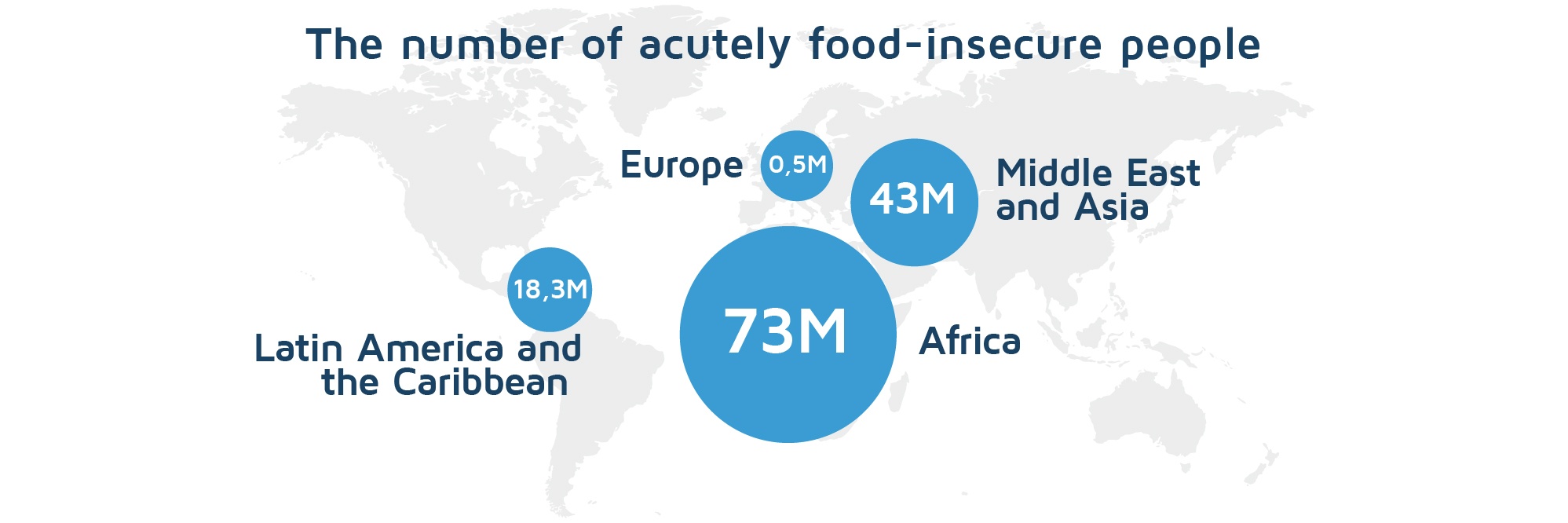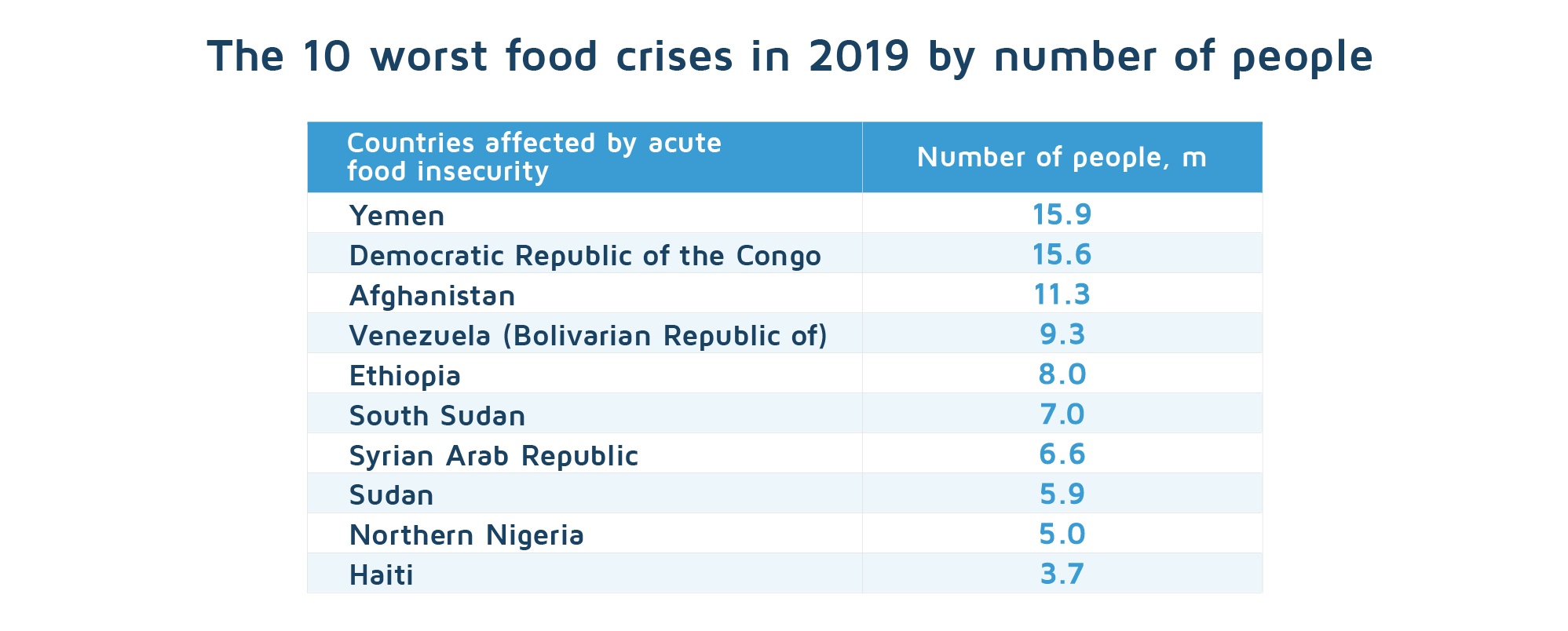The number of people who are experiencing starvation is on the rise. Communities that face acute food insecurity are the most vulnerable to the catastrophic repercussions of COVID-19. The situation is expected to deteriorate even further than those 135 million people already suffering exceptional emergencies in 55 countries of the world.
Unless appropriate action is taken to mitigate the impact of the outbreak, the number of people in a state of food crisis in low and middle-income countries will double by the end of 2020, according to the United Nations World Food Programme (WFP) with 35 of the selected countries being identified as having suffered major food crises in 2019. Millions of people were pushed into acute food insecurity as a result of additional shocks or stressors like conflicts and internal violence, worsening economic circumstances, disease outbreaks and displacements.

WORST FOOD CRISES
Before COVID-19 became a pandemic and brought about such devastating consequences, forecasts predicted that Yemen would head the list of countries suffering the world’s worst food crisis. In Yemen and South Sudan, more than half of the population faces acute food shortages. The ten countries presented in the table below account for 88 million people which means 66% of the total population in crisis. Their needs may rise in the context of the novel coronavirus.

FOOD INSECURITY LEADS TO DEVASTATING REPERCUSSIONS
High levels of food insecurity, containment measures and an insufficient or lack of income can increase malnutrition rates, particularly among children, pregnant women and the elderly. About 17 million children under the age of five across the 55 countries that were analysed in the UN’s report were acutely malnourished during the last year. The prospect of a dramatic increase caused by COVID-19 emerges after taking into consideration the evidence from the 2014-16 West African Ebola outbreak. Global Financing Facility Investors Group warns that potential disruptions to access to health and nutrition services will cause the death of 1.2 million children and 57,000 mothers in the next six months, representing, a 45% increase above the existing child mortality rate. The UN SDG target on no poverty and zero hunger is also under threat according to UNU WIDER research which points to an increase in global poverty by as much as half a billion people, the greatest increase since 1990.
WORSENING OUTBREAK COLLATERAL EFFECTS
Movement restrictions could disrupt food supply chains with the associated challenges of transporting key food items and accessing processing units and markets. Such instability could generate food shortages, a loss of income for producers and increase in prices. Vulnerable communities, who depend on humanitarian assistance, could be affected due to the suspension of supplies and restrictions on staff mobility. As a result, humanitarian aid delivery costs may become more expensive. The fragile contexts that people live in could force them to move to other regions in search of assistance.
CONTINUOUS DELIVERY OF ASSISTANCE
Given the unprecedented nature of the crisis, the pandemic could degenerate into a catastrophe. According to Food World Programme’s evaluations, in a worst-case scenario, we could witness starvation in about three dozen countries. The World Food Programme is seeking US$350 million to maintain the provision of humanitarian assistance around the world by setting up a network of hubs and transport systems. The United Arab Emirates joined the WFP’s plan of action and launched an international air bridge operation that will provide health and humanitarian supplies to nations around the world.
UN agencies and WFP, in collaboration with governments, are boosting programs and initiatives designed to cover the needs of the 370 million children worldwide who depend on school meals. For millions of them it is the only meal they get in a day. The two partners need US$600 million to support the total number of children out of school. Initially, they will focus on helping 10 million children in 30 low-income countries. The Food and Agriculture Organization of the United Nations is working on ensuring the continuity of the food supply chain, including that between rural and urban areas. Previously, the UN agency had asked donors for US$110 million to protect the food security of vulnerable communities from rural regions around the world. Concerted action must be further undertaken in order to safeguard the most vulnerable communities and avert a hunger catastrophe.
DevelopmentAid provides updates on the latest financial opportunities. Become a DevelopmentAid member and gain access to 161 tenders and 81 grants related to food security programs. Don’t forget to subscribe to our news and stay tuned to the latest information.

